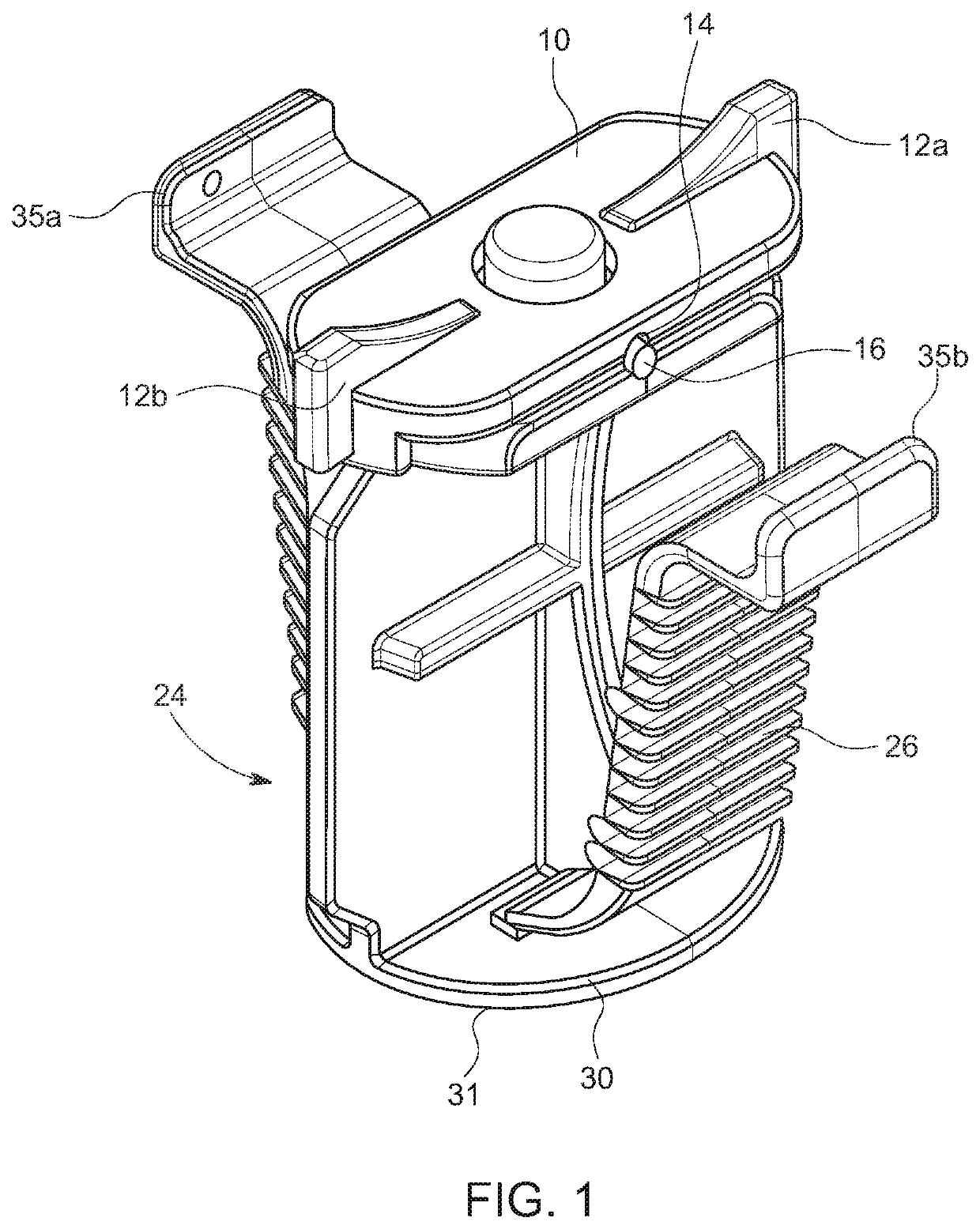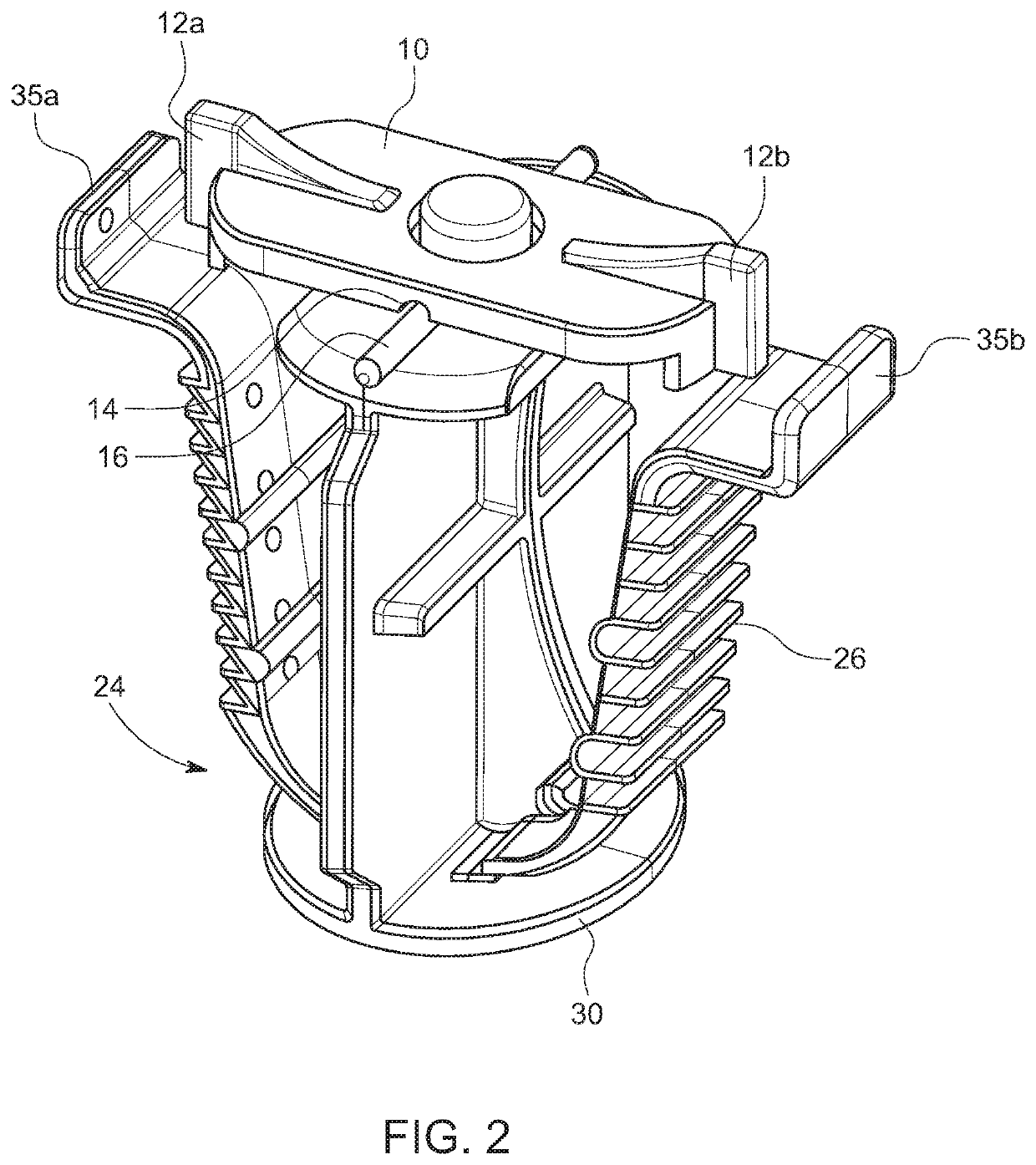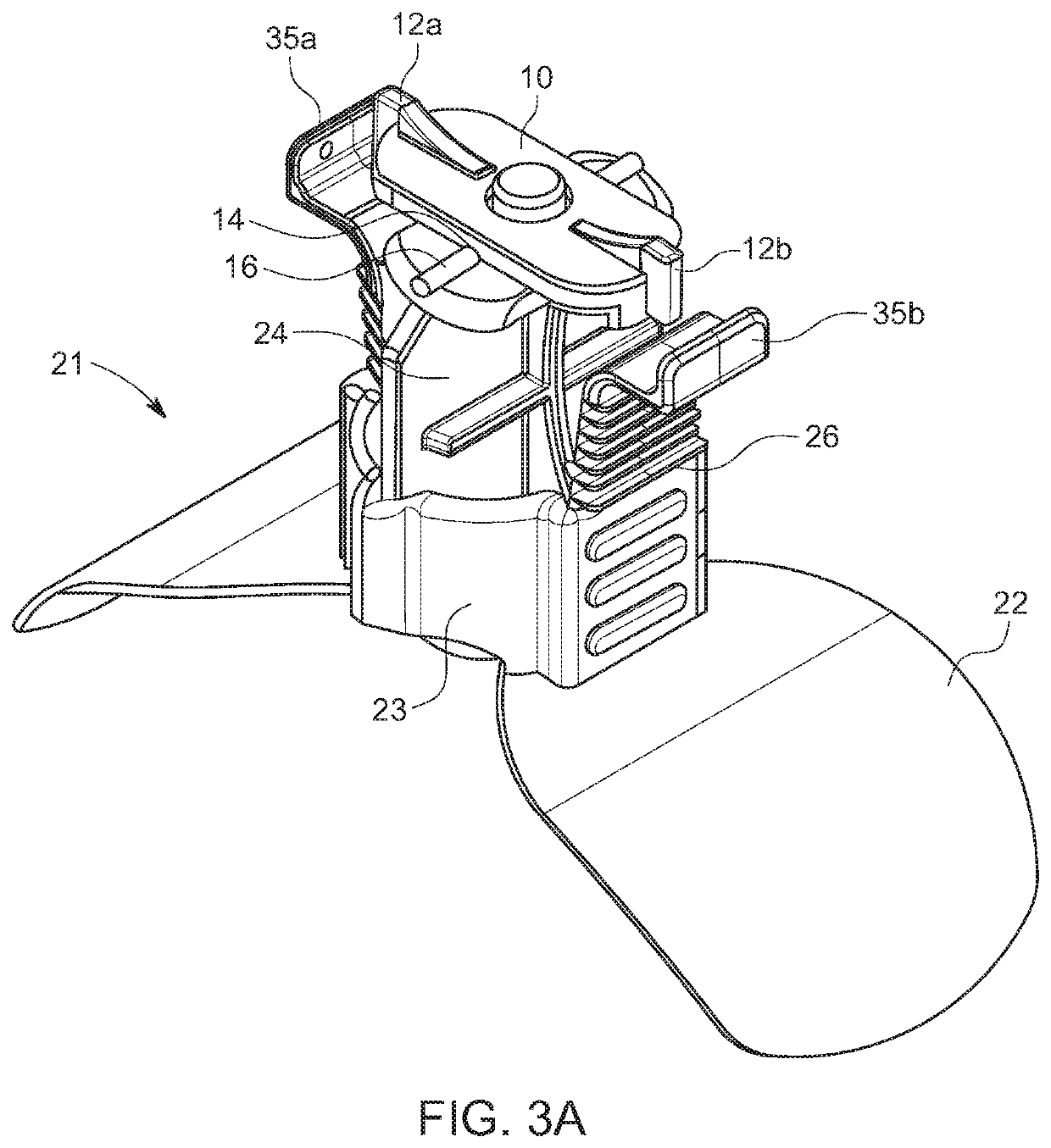Locking mechanism for hemostasis device
a technology of hemostasis and locking mechanism, which is applied in the field of locking mechanism, can solve the problems of premature release of compressive force, each procedures requires extensive interaction, and none of these prior art devices provides the clinician with a devi
- Summary
- Abstract
- Description
- Claims
- Application Information
AI Technical Summary
Benefits of technology
Problems solved by technology
Method used
Image
Examples
Embodiment Construction
[0030]As shown in the embodiment illustrated in FIGS. 1A-1C, 2A, 2B, 3A-3D, and 4A-4E, the locking mechanism comprises an elongated tab 10 rotatably affixed to the top of the plunger 24 of a VasoStat™ hemostasis device. The elongated tab 10 may be affixed by means of a pin, a locking snap fastener, or other such suitable connector (not shown), and is configured to be rotatable between a first, unlocked position, and a second, locked position. In the first, unlocked position, as shown in FIGS. 1A-1C, the ratcheted wings 35a and 35b attached to the base of the plunger 24 are not restricted in their inward movement. When rotated into the second, locked position, as shown in FIGS. 2A, 2B, and 3A-3D, the elongated tab 10 is oriented such that the top ends of the ratcheted wings 35a and 35b are restricted from inward movement. So restricted, the plunger 24 cannot be disengaged and the compressive force is maintained.
[0031]FIGS. 4A-4E show the progression of rotation of the elongated tab 1...
PUM
 Login to View More
Login to View More Abstract
Description
Claims
Application Information
 Login to View More
Login to View More - R&D
- Intellectual Property
- Life Sciences
- Materials
- Tech Scout
- Unparalleled Data Quality
- Higher Quality Content
- 60% Fewer Hallucinations
Browse by: Latest US Patents, China's latest patents, Technical Efficacy Thesaurus, Application Domain, Technology Topic, Popular Technical Reports.
© 2025 PatSnap. All rights reserved.Legal|Privacy policy|Modern Slavery Act Transparency Statement|Sitemap|About US| Contact US: help@patsnap.com



